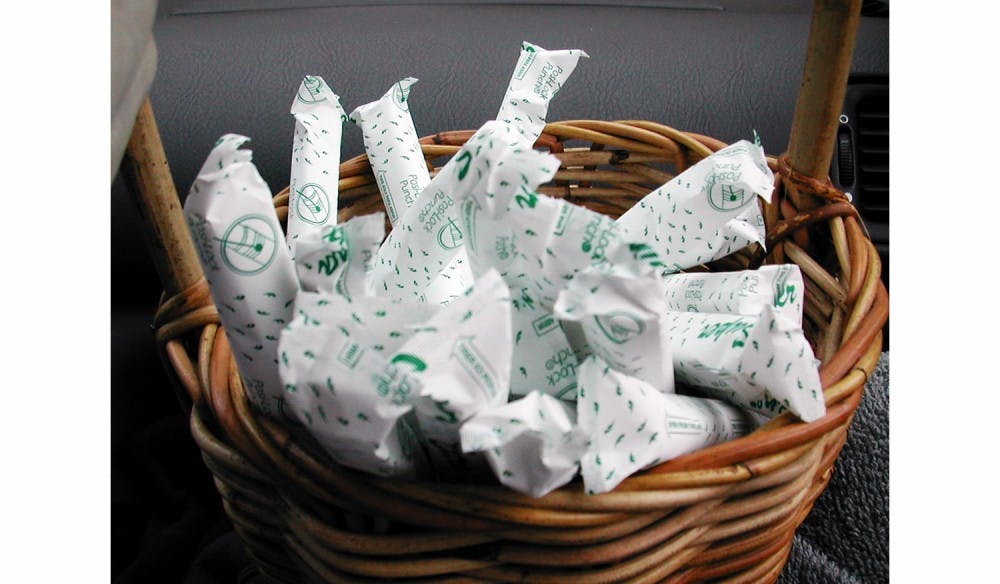You know the moment. You’re sitting in class, scribbling down notes only when you hear your professor explicitly say, “This will be on the exam,” trying to figure out which food truck will have the shortest line because your appetite just cannot be satiated today.
Then the dread kicks in. Your insides begin twist as they only do for three to seven days, once a month. You scramble to the closest bathroom, only to find that the worst has happened—those cute undies you put on this morning because you were feeling ~fun~ are now money down the drain. You shove some toilet paper down there to last until you get home, and you go back to class. All hope of learning for the next 27 minutes has been flushed down the toilet, along with what looks like evidence from a crime scene.
The Crimson Wave. The Curse. Shark Week. You know what I’m talking about. Approximately half of us here at Penn wrestle with it every few weeks.
Menstruation.
Yep, that awful, clinical word they told you about in fifth grade. I remember my teacher telling the girls in my class that we would each lose two to four tablespoons of blood per month out of our vaginas. I almost passed out on the spot. What kind of sick joke was that? And to make matters worse, we would have to stick something up there or wear what sounded like a glorified diaper.
Now, years after “becoming a woman,” I still dread those few days each month where not only are my patience and energy drained, but so too is my wallet. One 18–count box of plastic applicator tampons costs between $3.99 and $5.79 at CVS, and a box of 28 pads ranges from $2.99 to $9.39. That may not seem significant, but over time, the costs add up. A Huffington Post report on "the pink tax"—the lifetime costs of tampons, liners, pain medicine for cramps and new underwear to replace the unsalvageable stained panties—found the typical total was about $5,725.
I know I am extremely fortunate. When I buy tampons each month, I roll my eyes, frustrated that the money would be better spent on soup dumplings at Dim Sum Garden or on an exorbitant number of espresso chip Magic Carpet cookies. But for many Penn students, feminine products are a significant expense. Tampons and pads are necessary for those who menstruate in order to keep up with their normal lives during their periods. Class doesn’t stop, extracurriculars don’t stop, the crush you have on your British TA doesn’t stop. You’re expected to maintain everything, on top of feeling like shit for a week and coughing up the money to handle it.
This semester, the Undergraduate Council of Students at Brown University has recognized this struggle. The UCS started an entirely student–run initiative of providing non–residential university buildings with free tampons and pads in bathrooms. What’s more, the Brown UCS recognizes that those who menstruate have varied outward appearances of gender, so the supplies are stocked in women’s, men’s and gender–neutral bathrooms. The free tampon and pad policy caters to both cisgender and transgender students—because if you’ve got a vagina, you need them!
When I first heard about the new policy, I was ecstatic. Free tampons that are right there when you need them? It sounded like a fantasy. Then it dawned on me that Brown should not be an anomaly. Why are feminine products not always free at school? We pay enough tuition for toilet paper (albeit rough and one–ply) and hand soap, plus free condoms in every dorm and at SHS. Surely, Penn can spring for tampons and pads. It's a small convenience that would make a big financial difference for many students. I sincerely hope that Penn follows Brown's example and makes many of our lives a little easier during those hellish days.
Period.

